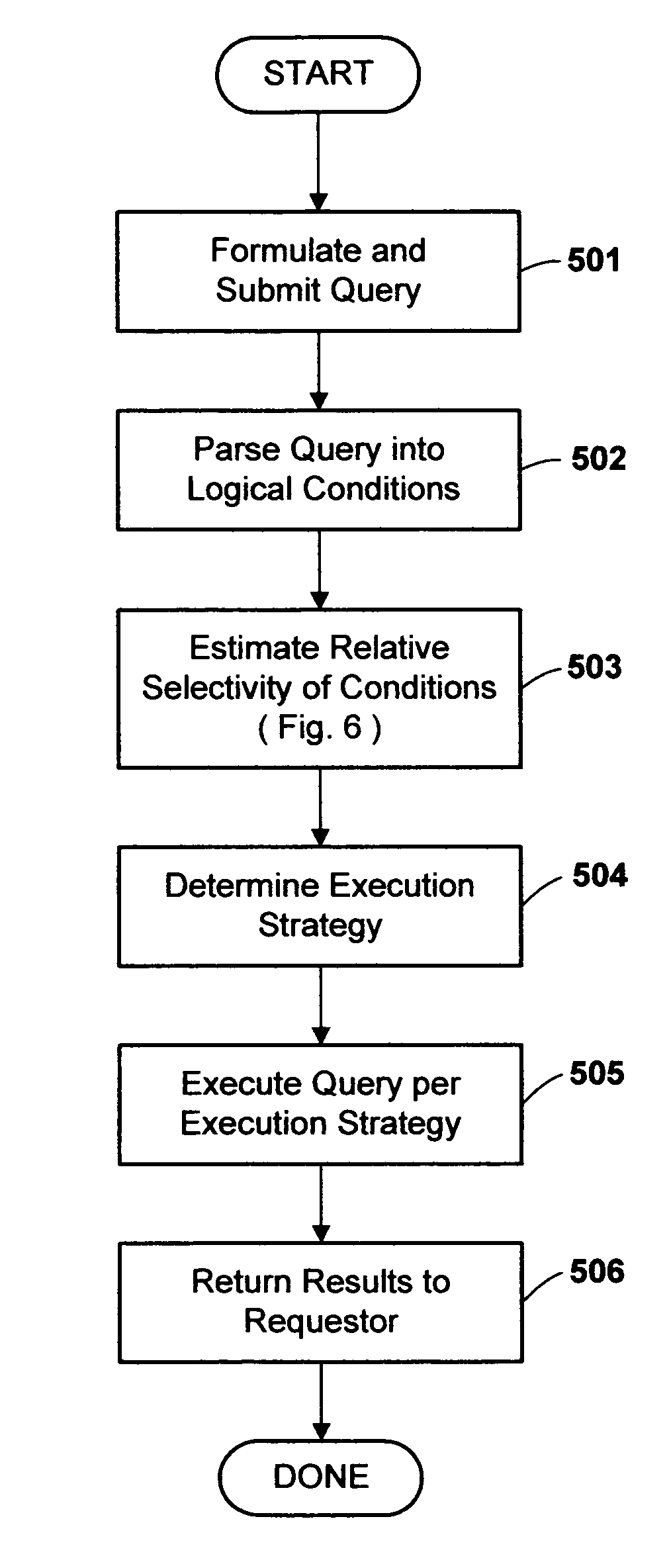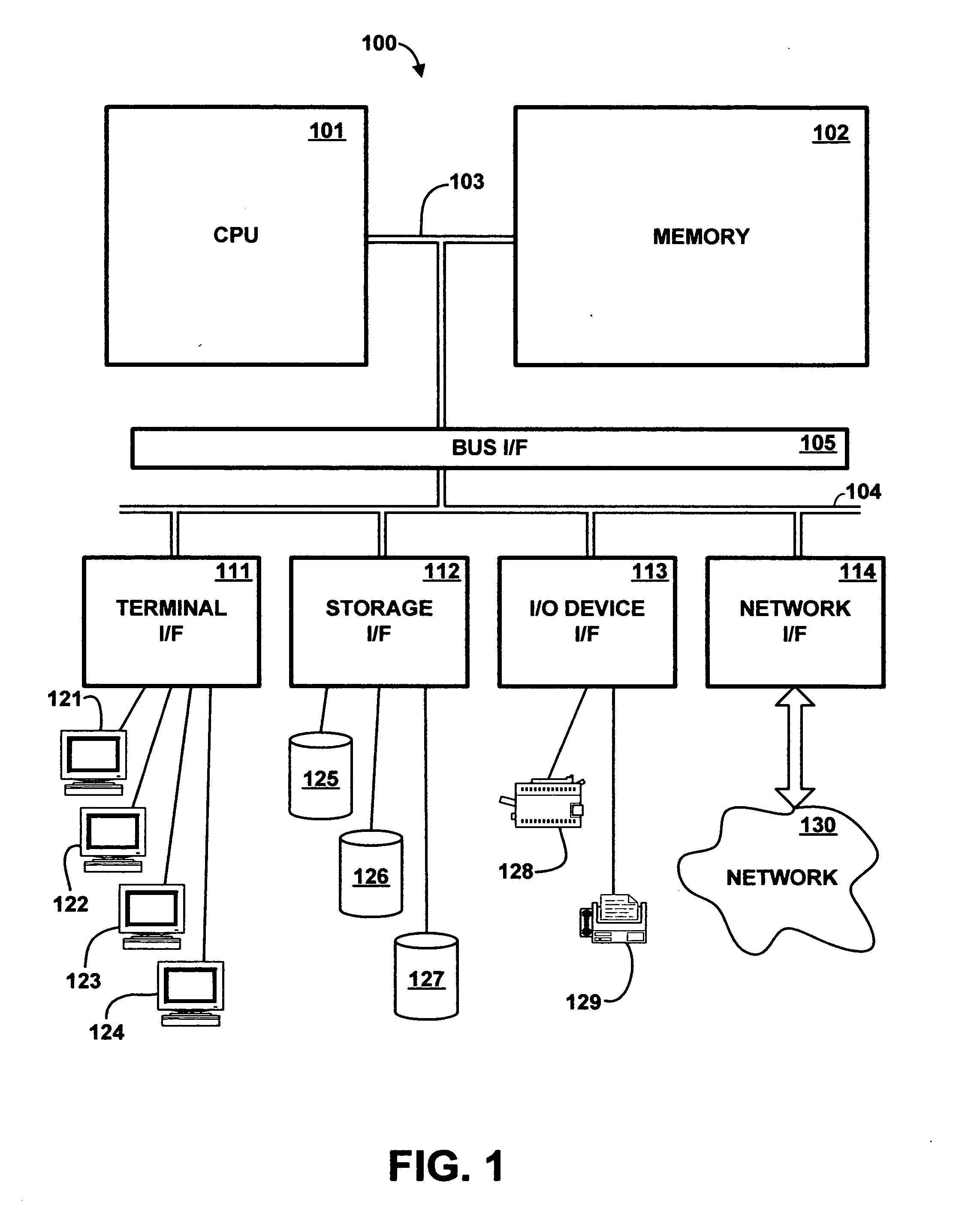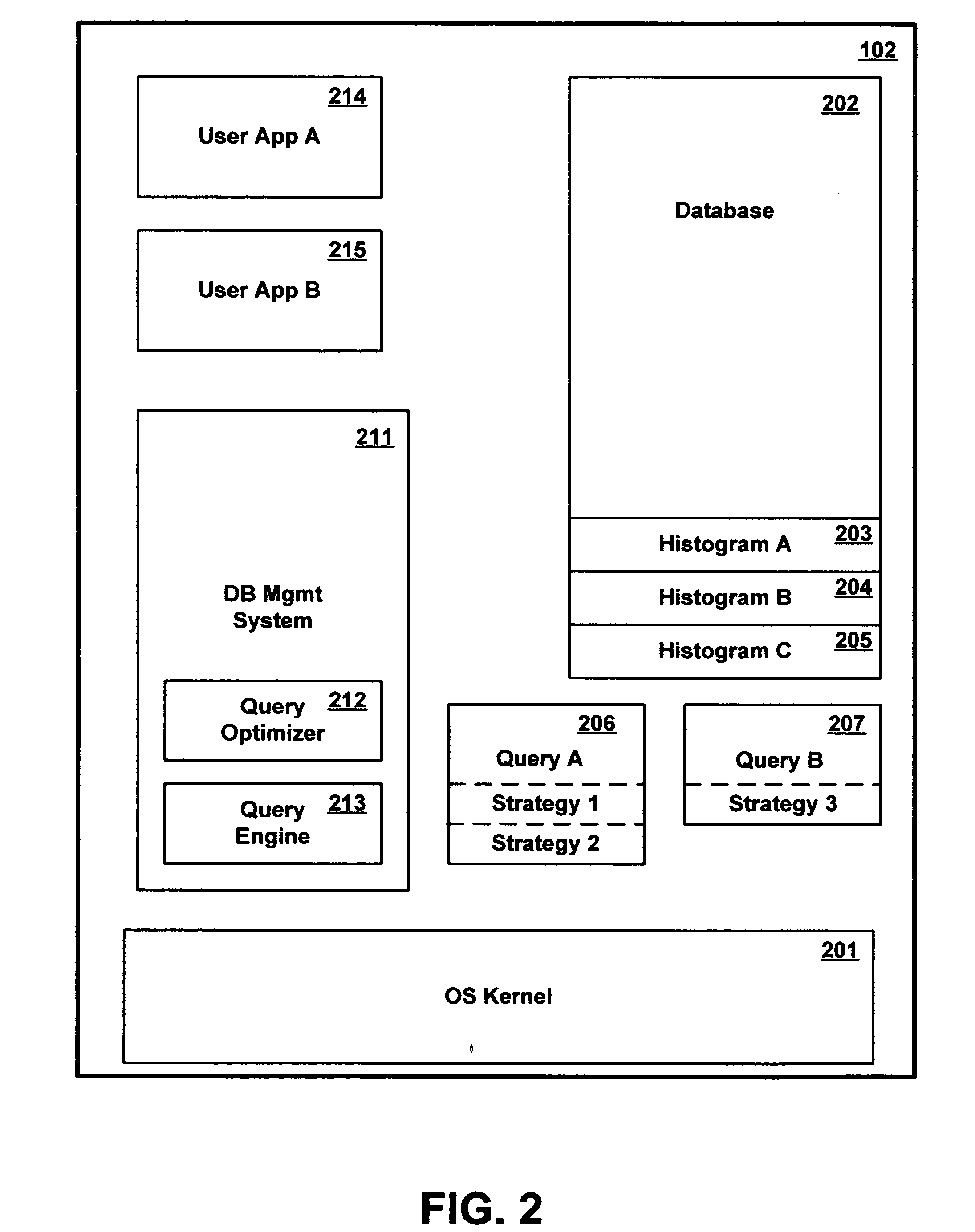Method and apparatus for predicting relative selectivity of database query conditions using respective cardinalities associated with different subsets of database records
a database and relative selectivity technology, applied in the field of digital data processing, can solve the problems of large system resources, complex processing, and large processing resources, and achieve the effect of increasing prediction accuracy, reducing processing overhead, and comparing the predicted number of records responsively
- Summary
- Abstract
- Description
- Claims
- Application Information
AI Technical Summary
Benefits of technology
Problems solved by technology
Method used
Image
Examples
Embodiment Construction
[0025] Referring to the Drawing, wherein like numbers denote like parts throughout the several views, FIG. 1 is a high-level representation of the major hardware components of a computer system 100 for determining query execution strategies by predicting the number of records responsive to a condition in a query using respective cardinalities associated with different quantiles of an equal height histogram, according to the preferred embodiment of the present invention. CPU 101 is a general-purpose programmable processor which executes instructions and processes data from main memory 102. Main memory 102 is preferably a random access memory using any of various memory technologies, in which data is loaded from storage or otherwise for processing by CPU 101.
[0026] Memory bus 103 provides a data communication path for transferring data among CPU 101, main memory 102 and I / O bus interface unit 105. I / O bus interface 105 is further coupled to system I / O bus 104 for transferring data to...
PUM
 Login to View More
Login to View More Abstract
Description
Claims
Application Information
 Login to View More
Login to View More - R&D
- Intellectual Property
- Life Sciences
- Materials
- Tech Scout
- Unparalleled Data Quality
- Higher Quality Content
- 60% Fewer Hallucinations
Browse by: Latest US Patents, China's latest patents, Technical Efficacy Thesaurus, Application Domain, Technology Topic, Popular Technical Reports.
© 2025 PatSnap. All rights reserved.Legal|Privacy policy|Modern Slavery Act Transparency Statement|Sitemap|About US| Contact US: help@patsnap.com



